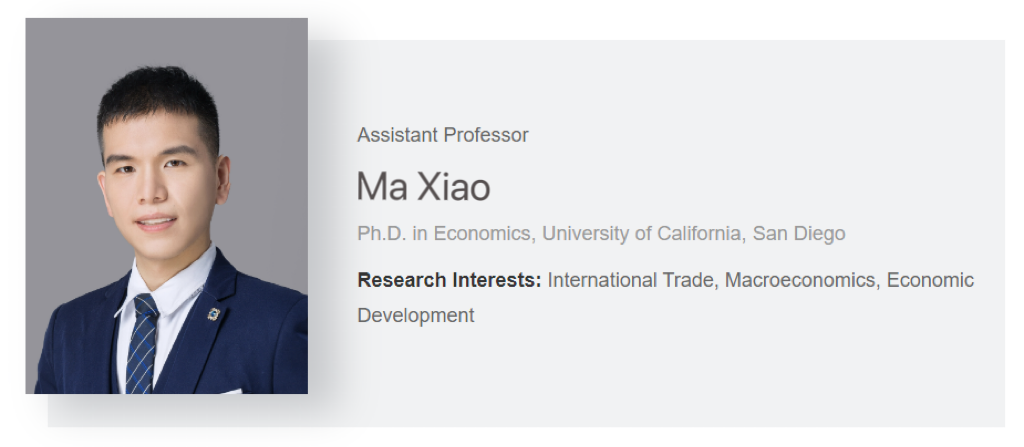Along with China’s economic miracle, the share of global trade of “Made in China” goods surged from 0.8% to 13% between 1980 and 2005, effectively establishing China as a dominant force in world manufacturing trade. While a large body of literature has focused on the consequences of China's export, fewer papers have examined the sources causing China's export surge.
In “Migration, Tariffs, and China’s Export Surge,” a paper recently published by the Journal of International Economics, PHBS Assistant Professor Ma Xiao and his coauthor, Liu Chen of the National University of Singapore, jointly analyze several factors and quantify the relative contributions of migration and tariffs to China's export surge.
In the paper, the authors build a multi-sector spatial general equilibrium model and combine rich data sources to account for China’s export surge between 1990 and 2005 due to three policy changes: China’s import tariffs, tariffs imposed against China’s exports, and barriers to internal migration in China. In the model, workers choose which provinces and sectors to work in, and firms choose where to produce and whether to involve in processing or ordinary export regimes. The authors explore provincial and sectoral variation on the changes in firm mass, migrant employment, and tariff exposure to discipline the model parameters. Finally, the authors jointly analyze the effect of tariff and migration policies on China's export surge, as well as the importance of equilibrium firm and worker adjustments.
The main quantitative findings are three-fold. Firstly, Ma and Liu find that the three policy changes jointly accounted for 30% of China's export growth between 1990 and 2005, indicating that migration and tariff policies are important drivers of China’s export surge.
Secondly, they find that the joint effect of policies is 9% larger than the aggregation of individual effects, suggesting a positive interaction between trade and migration policies. Intuitively, as migration reform prepared the country to become more export oriented, China enjoyed faster export growth after opening to trade than it would have otherwise.
Finally, the authors show that accounting for equilibrium adjustments of workers and firms is quantitatively important for evaluating China's export growth. In a model where firms' location and regime do not respond to policy changes, the joint effects of policies on export growth drop by nearly half; and in a model where workers do not adjust across locations or sectors, the export impacts of tariffs drop by 12%.
















